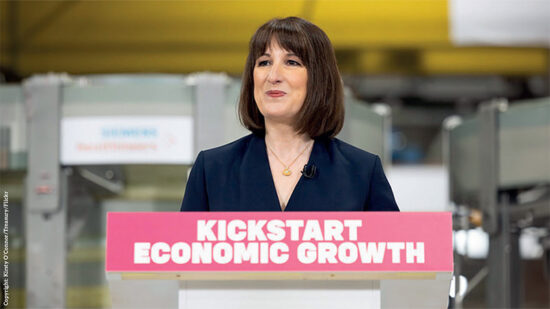The existence of the traditional 60/40 model portfolio is being threatened as inflation continues to rear its ugly head, according to the chief investment officer of Tam Asset Management.
The 60/40 portfolio consists of 60% equities and 40% fixed income – but rising inflation and the changing nature of financial markets are highlighting the flaws of this approach.
James Penny, chief investment officer at Tam Asset Management, told International Adviser: “Inflation is permeating everything. The 60/40 portfolio, with 40% of that in fixed income, was supposed to offset the volatility in equities.
“But they’re both now positively correlated, and they were both selling off together in January and all of last year. That’s down to inflation. Your inflation narrative permeates not only equities, but fixed income as well. It’s huge.
“It’s not about, are you inflation protected? It’s about, what are the foundations of your portfolio? Are they prepared for the structural change? That might prove a flash in the pan or a six-month switch.
“Where we’re sitting today, the inflation narrative is affecting pretty much every single part of a multi-manager portfolio.”
The alternative question
Penny said that maybe the model portfolio needs to have an alternative influence in the long term.
The Financial Conduct Authority (FCA) has seen the light when it comes to the mainstream potential of alternatives and has been looking to get more retail investors access to assets like infrastructure and private equity.
In October 2021, the UK regulator said it will take forward proposals to establish a type of open-ended authorised investment fund to support investment in traditionally institutional assets.
Penny said: “The 60/40 structure has always been associated with model portfolios, but they are just a diversified basket of assets. A model portfolio is not dead and I like to remind people that maybe the 60/40 structure might be under pressure.
“But a model portfolio is most certainly not under pressure.
“The 60/40 portfolio is naturally coming under pressure because of the forces that are at play against fixed income. We’ve had basically quantitative easing in certain forms ever since 2008 and that’s what’s made the 60/40 portfolio so good because you’ve had equities going up and you’ve had fixed income going up.
“They’re both coming down again, people coming out and saying maybe it’s not the great basket that we thought it was. I would come back to the mantra of diversification. If you can have a high quality, diversified portfolio of fixed income and equities and also alternatives, then that model portfolio still exists.
“Maybe in time it will not be the 60/40 portfolio, maybe it will be the 60/20/20 portfolio or the 50/50 portfolio, but the other 50% is fixed income and alternatives.”
‘Robust building block’
Penny also believes that alternatives are set for a big future in retail investments.
He added: “Alternatives have become such a huge part of the marketplace whether that’s long short equity, macro funds, hedge funds, private equity, property, gold, silver or even music royalties.
“They are all fantastic ways of staying in the mainstream market, but they also give your clients diversified revenue exposure.
“A lot of people will say they don’t understand the liquidity profile and the risk can’t be quantified. I understand that, but I think as the 60/40 portfolio continues to come under pressure, more credence is going to be given to the alternative sector as a robust building block of a model portfolio.
“I think you’re only going to see that get more and more powerful. I truly believe the battleground of model portfolio management in the future is going to be the alternative space.”
Education
It may take time for alternatives to become a mainstay in the retail investment market.
One reason for that is clients will need to be educated on the alternative space before they are allowed to invest into it.
Penny said: “I think education needs to happen on all fronts. This means education around alternatives, but also equities, fixed income and precious metals.
“Advisers on the whole are extremely knowledgeable. But I think there is an education gap especially around alternatives. I think where there’s sometimes a knowledge gap, advisers are at risk of inserting either their own view or inserting stereotypes in assumptions, and maybe it puts them off a sector that their clients and their risk profile would really benefit from.
“I’ve always said the mantra at Tam is that if I can’t explain it to my grandmother, I’m not going to own it. In this market in the last 10 years, you don’t need to go to structure products or derivatives to make really good returns, you can make that from the market or buying an S&P 500 ETF.
“You don’t need to go into the dark illiquid parts of the market to find the best returns. I would take one client that understands what we do, over 10 clients that don’t because it means that they understand the journey, what you’re trying to do, and they get the message.
“Luckily our IFAs do a really good job of educating their clients. I can actually speak with a lot of confidence that almost all of our clients have had that education.”








